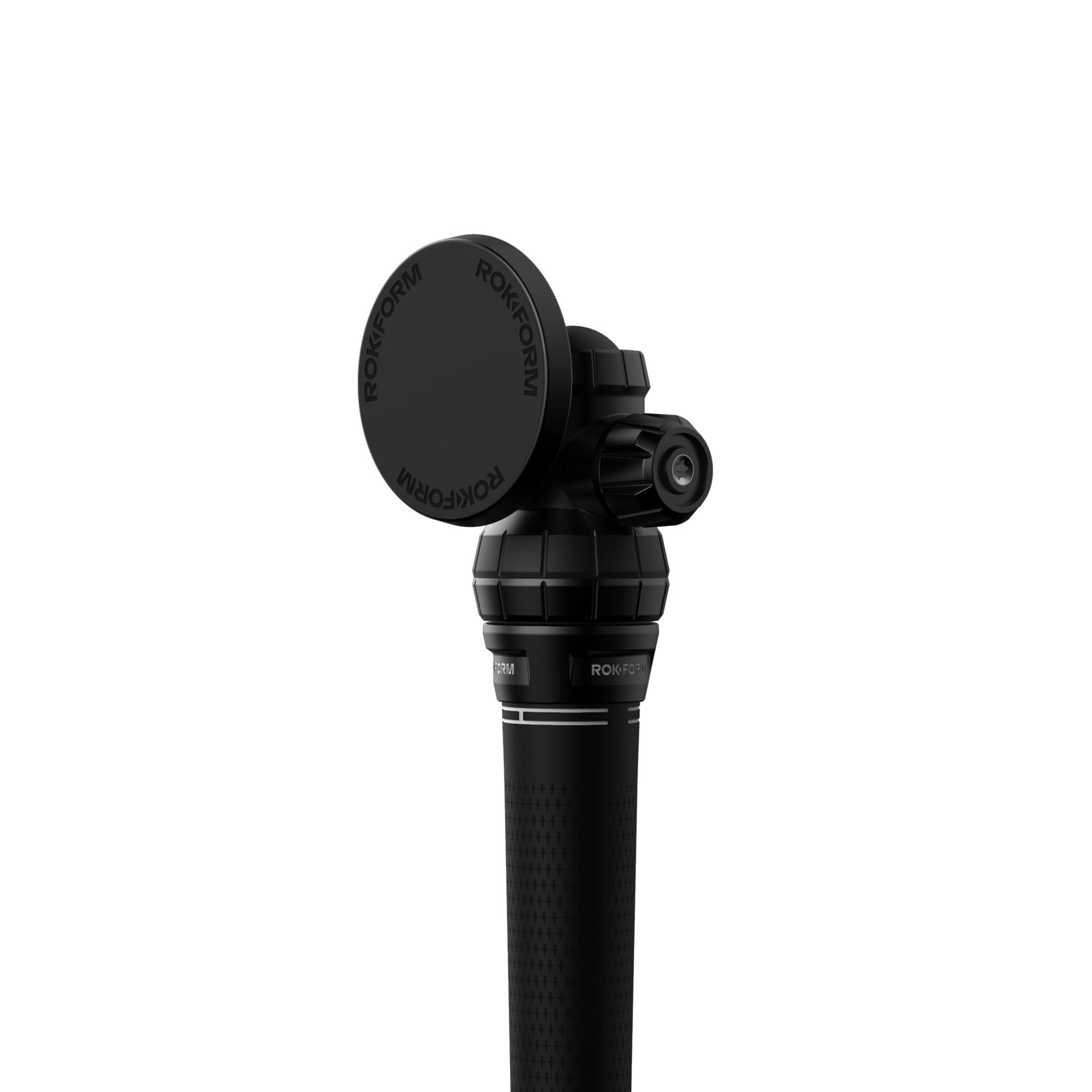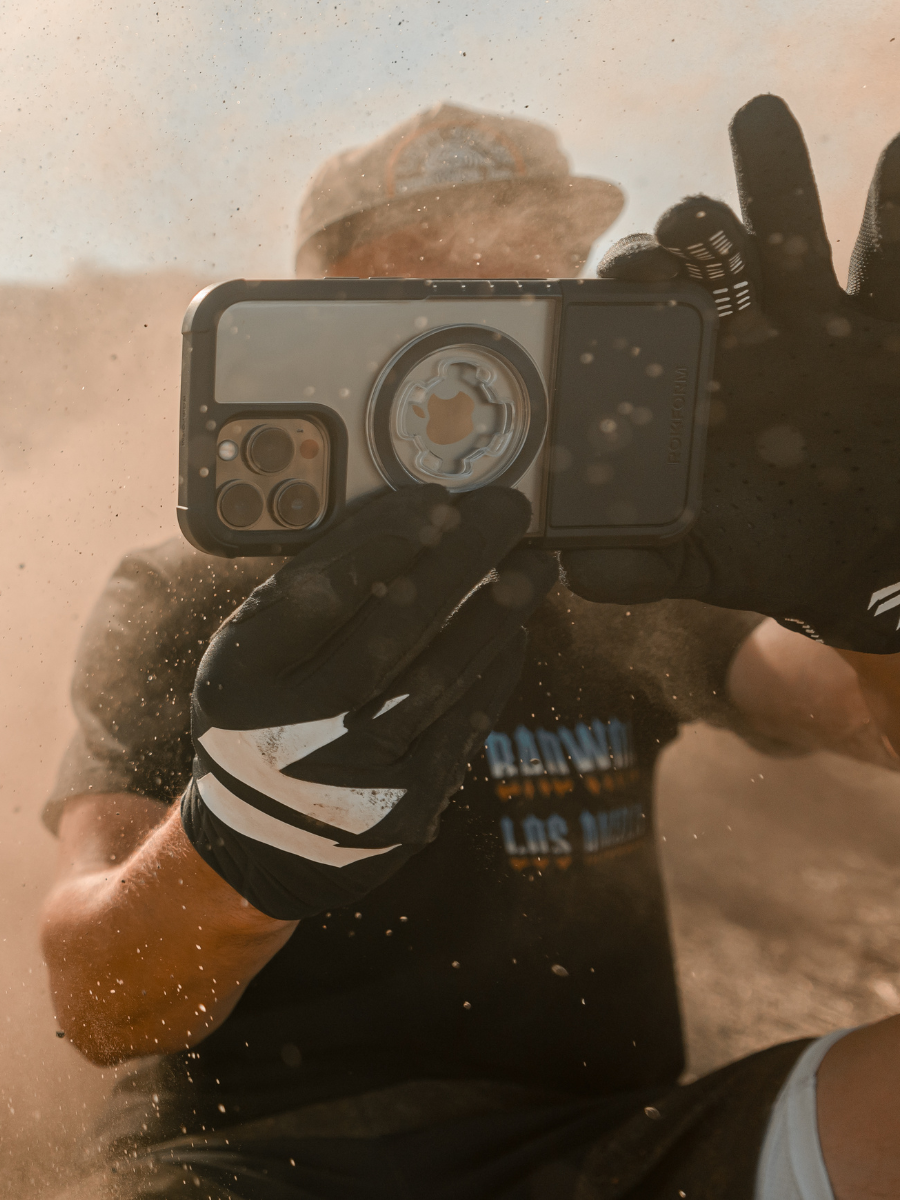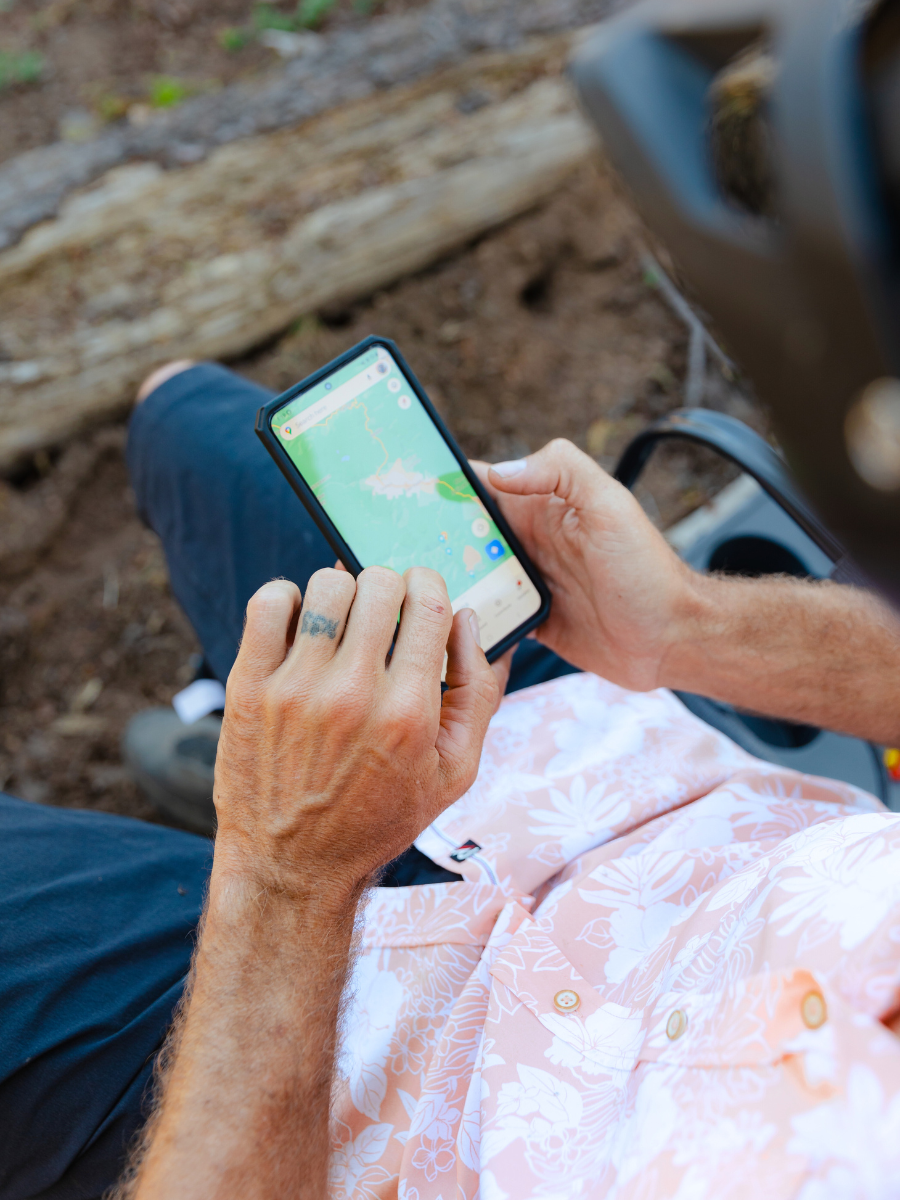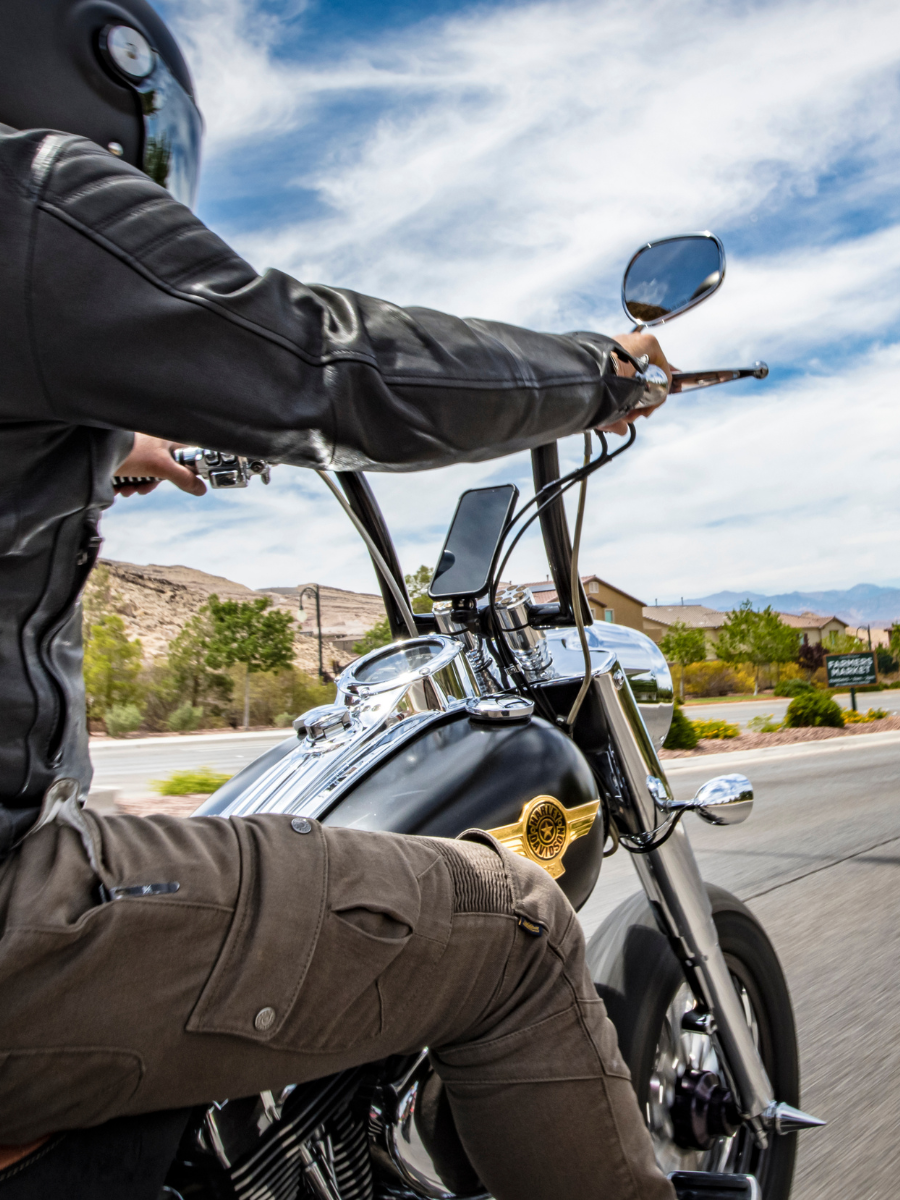Smartphone cameras are now capable of recording video that’s worthy of the big screen, shown by a growing number of feature-length films shot only on phones. These small devices can help anyone release their inner filmmaker but to really take amazing shots, there are several smartphone video tips to follow. In this guide, I’ll share the best practices and simple tricks for taking great video on your phone.
ROKFORM manufactures protective phone cases and premium mounts for your active lifestyle. Our rugged phone cases for Apple and Samsung devices defend against drops from up to 6 ft and are compatible with MagSafe products. For secure use on the go, you can mount your phone to your bicycle, motorcycle, or car and keep your device within reach. With a diverse range of compatible accessories, ROKFORM gear works hard so you don’t have to.
How Do I Take a Good Video on My Phone?
Taking good video on your phone starts with the right tools and techniques. First, pay attention to the frame’s composition and light to shoot great-looking video. Regardless of whether it's a simple sunset or guerrilla filmmaking, there are several ways to boost the video’s artistry beyond just following the rule of thirds.
Photographer and MIT researcher Anne Whiston Spirn commonly explained the elements of a great image as involving a composition with interesting light, significant detail, and poetics. Simply put, make sure you control your lighting and consider the subject and composition of your frame.
How Do I Achieve Good Lighting For Video?
The best way to achieve good lighting in your video is by filming in areas with natural light, such as by windows. Taking video outside on a cloudy day can make for soft, even light that’s less harsh than filming in direct sunlight. Getting the lighting just right won’t always be something within your control, but choosing good places to shoot can make a world of difference.

How Do I Hold My Phone While Filming?
Hold your phone with two hands and film in a horizontal orientation. Turn the phone into landscape mode for a better video that’s formatted properly for watching on wide screens such as a TV or computer. Holding it with both hands or using a phone tripod keeps the camera stable while shooting.
One of a professional videographers’ biggest pet peeves is when people take vertical videos in portrait mode, leading to those thick black bars on either side when replaying the video on a TV or computer monitor. Instead, film with a landscape orientation for the best results. That said, if you are filming exclusively for social media that will be viewed on mobile devices, filming vertically may be a good idea. Video clips on YouTube Shorts, Instagram stories, or Facebook Reels are typically edited in this way.

Having your phone out in the open means there’s a possibility of accidental drops, scratches, or other daily wear. ROKFORM phone cases are built tough to protect your device and withstand heavy use in the city, outdoors, or at the job site. Our cases are compatible with a range of Apple and Android smartphones, including the latest iPhone 14 and Samsung Galaxy S23 models— and watch for the upcoming iPhone 15 cases that launch this fall!
Adjusting Your Phone Camera Settings
What’s the Difference Between iPhone and Galaxy Cameras?
The latest Samsung Galaxy and iPhone models represent the leading edge of smartphone camera technology. Each brand’s camera can shoot 4K video, an achievement that would have been unheard of just a few years ago. ROKFORM makes cases for both the iPhone 14 Pro Max and Samsung Galaxy S23 Ultra— compare their camera specifications below.
iPhone and Galaxy Camera Comparison Chart | ||
| iPhone 14 Pro Max | Samsung Galaxy S23 Ultra | |
| Front camera | 12MP | 12 MP |
| Rear camera | 48MP main camera, 12MP ultrawide camera, 12MP telephoto camera | 200MP, 12MP ultrawide camera, 10MP camera, 10MP telephoto |
| Front video | 4K @ 60FPS | 4K @ 60FPS |
| Rear video | 4K @ 60FPS | 8K @ 30FPS, 4K @ 60FPS, Super Slow-Mo @120fps and 960fps |
Image Resolution
An important first step is selecting your desired video resolution. For high-definition video, the two most common resolutions are 1080p and 4K, the latter offering the highest image quality.
Remember that higher quality 4K video takes up significantly more memory space on mobile phones, so video quality is often an act of juggling desired resolution with available storage left on the device. Some mobile phones allow users to adjust the video frame rate. The normal speed for most videos is 30 fps, but some filmers like to shoot in more cinematic-feeling 24 fps.
Digital vs. Optical Zoom
There aren’t typically many zoom settings to tweak per se, but it’s important to know your camera’s specifications when it comes to zoom. While some new smartphones have multiple lenses to achieve 2x optical zoom, most of a phone camera’s zoom capabilities come from digital zoom, which is essentially software trying to artificially replicate the results of optical zoom.
A professional camera achieves optical zoom with various magnifying lenses inside the main camera lens, something that phones don’t have the space for. Try to limit digital zoom while taking video, as it will reduce image clarity. Using our legs to walk up closer to what we’re shooting is an old-fashioned zoom tip that won’t ever go out of style (when possible, of course).
Audio Quality
Part of the magic of video compared to photography is that it can include audio. Overlooking your video’s audio quality by geeking out solely about camera optical specs, however, can lead to issues down the road, especially when editing the sound later on.
Do some tests with your phone’s built-in microphone to see how it sounds in recordings, but odds are that it produces relatively poor audio quality— after all, phone mics are typically just used for calls and voice notes. Purchasing an external microphone is the best way to improve your chances of capturing quality audio.

Another top accessory for smartphone users is the ROKFORM MagSafe Universal Adapter. This slim case adapter sticks to any phone case so all users can enjoy the benefits of ROKFORM’s Extra Strength MAGMAX™ and patented twist-lock mounting. This all-new product now comes with the MagSafe magnetic ring layout that provides instant mounting to any magnetic surface and wireless charging compatibility. It also works with our MagSafe Sport Ring with Stand for ultimate convenience and functionality on the go.
ROKFORM manufactures cases for iPhone and the Samsung Galaxy, but owners of other models can easily join the ROKFORM ecosystem and use their compatible phone mounts. If you don’t see your phone case, simply slap on the MagSafe Universal Adapter that’s just as strong and secure as our integrated retention system. Use the adapter with popular models such as the Google Pixel and Samsung Note with impressive cameras that are favorites among photographers.
To learn more about the ROKFORM MagSafe Universal Adapter, watch the video below to see it in action:
Top 6 Smartphone Video Tips
Small tweaks and techniques when shooting video on your phone can make a big difference to the final product. In addition to the video advice discussed earlier, I’ve curated several specific tips that any user can implement in a flash.
Here are some quick and easy tips to boost the quality of your phone’s video:
- Film in landscape mode
- Hold the phone with both hands
- Don’t shoot backlit
- Record good audio
- Try using video effects
- Use video editing apps
1. Film in Landscape Mode
Hold the phone in the horizontal orientation while filming to get the highest quality results that have the correct wide aspect ratio for viewing on a TV or computer screen. Amateur video shown on social media or new segments is typically easily identifiable because of its vertical orientation. Easily enhance your video quality and flip that phone on its side.
2. Hold Phone With Both Hands
Filming with both hands on your phone improves stability and reduces the chance of an accidental drop, especially during a moving shot. Modern smartphones do have optical image stabilization built into their cameras, but it’s always best to keep your phone as still as possible anyway.

Speaking of stability, ROKFORM phone mounts are a great way to keep your device safe and in place when on the move. We offer secure mounts built for bicycles, cars, and motorcycles that work with ROKFORM cases’ double retention system made from the twist-lock and strong magnets. Whether you’re using maps or simply want your phone handy for snapping pictures out on the road, these mounts are incredibly useful accessories.
“A stable mount! This device anchors securely and easily, giving me confidence that my phone is visible, at the ready, and secure.”
3. Don’t Shoot Backlit
Try to avoid filming where the subject is in front of a light source, such as a bright window or the sun. This will darken the subject and make it appear like a shadow or silhouette with very little definition or color. Instead, try to film with the light coming in from the sides or from behind whatever you are focusing on.
4. Record Good Audio
If you have a musical ear, audio may be an important element of your video from the start, but many beginners can forget about a video’s sound when shooting. Setting is crucial here, so try to find a quiet place or place the microphone as close to your subject as possible. One trick is to use external Bluetooth or cabled mics instead of your phone’s small, built-in microphone. If you have two phones available, use one for filming and place the other one as near to the subject or person as possible, such as in their pocket, and sync up the audio later.

5. Try Using Effects
To add some creative flair to your video, play around with effects like slow motion or time-lapse, which are included in most modern smartphones. This can make for special moments in your video or capturing a certain subject in a unique way.
6. How to Edit a Phone Video
The easiest way to edit a video on your phone is with mobile apps, meaning there’s no need to upload or transfer files to a computer. Third-party apps like Filmic Pro are convenient ways to edit and add effects to your video directly on your phone.
Editing capabilities continue to skyrocket every year. “We’ll fix that in post” isn’t a curt excuse anymore, but rather an honest description that almost anything can be edited after the initial shot. That said, editing technology is not quite the same for phone video compared to fancy computer programs that will always have a leg up.
Frequently Asked Questions
Which way should I hold my phone when filming?
What’s the best way to protect my phone’s camera?
Protect your phone and its camera with a heavy-duty ROKFORM phone case. Protruding camera lenses can be especially vulnerable during accidental drops, but the reinforced ROKFORM cases feature military-grade protection that defends your device from impacts from 6 ft up. Our cases are also compatible with ROKFORM’s wide range of phone mounts that keep your device secure when biking, driving, or riding a motorcycle.

Should I record in 4K or 1080p on my phone?
The choice between filming in 4K or 1080p will depend on the final viewing destination of your video. If you’ll be showing your video on a large screen, 4K offers much higher quality, but there won’t be a noticeable difference when watching on a small screen, such as a phone or tablet. A 1080p file also takes up less memory space and will stream or download faster than 4K video.
ROKFORM: Protective Cases for Your Smartphone
For the frequent phone filmers out there, it’s even more important to protect your device while shooting on the go. When your phone is working double duty, it’s ROKFORM’s job to ensure it stays safe and secure. Defend against accidental drops and impacts with our high-quality phone cases made from premium materials with reinforced corners.
Have questions about our products or which case is right for your smartphone? We are available for online chat or in-person at our Irvine, California showroom. Call us toll-free at 855-765-3676, or email us at info@rokform.com, or visit us at www.rokform.com









